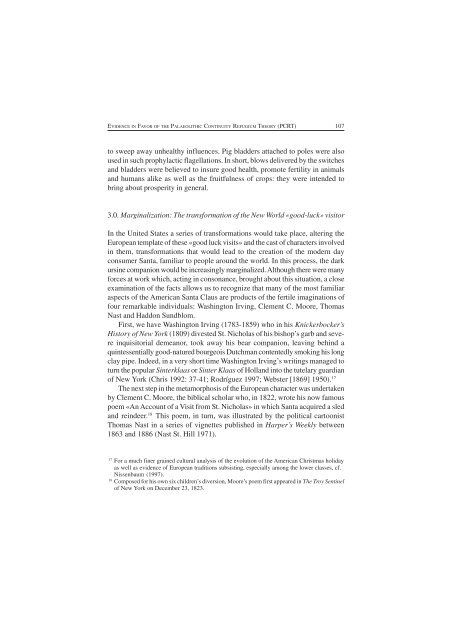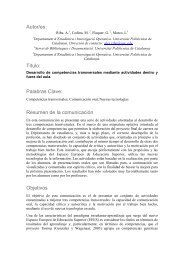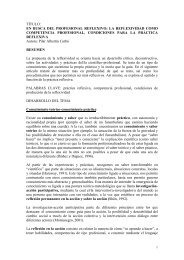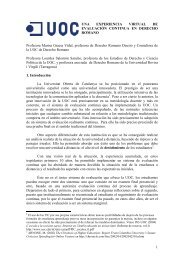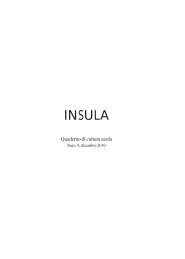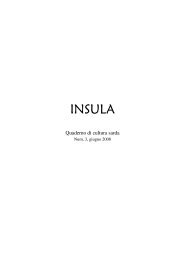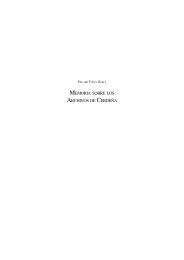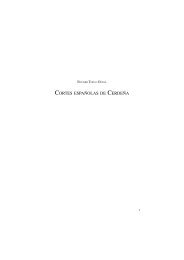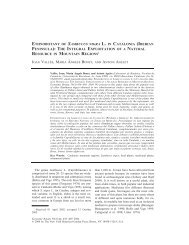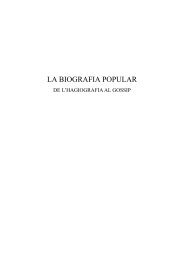Impaginato 5.p65 - Universitat Rovira i Virgili
Impaginato 5.p65 - Universitat Rovira i Virgili
Impaginato 5.p65 - Universitat Rovira i Virgili
Create successful ePaper yourself
Turn your PDF publications into a flip-book with our unique Google optimized e-Paper software.
EVIDENCE IN FAVOR OF THE PALAEOLITHIC CONTINUITY REFUGIUM THEORY (PCRT)<br />
107<br />
to sweep away unhealthy influences. Pig bladders attached to poles were also<br />
used in such prophylactic flagellations. In short, blows delivered by the switches<br />
and bladders were believed to insure good health, promote fertility in animals<br />
and humans alike as well as the fruitfulness of crops: they were intended to<br />
bring about prosperity in general.<br />
3.0. Marginalization: The transformation of the New World «good-luck» visitor<br />
In the United States a series of transformations would take place, altering the<br />
European template of these «good luck visits» and the cast of characters involved<br />
in them, transformations that would lead to the creation of the modern day<br />
consumer Santa, familiar to people around the world. In this process, the dark<br />
ursine companion would be increasingly marginalized. Although there were many<br />
forces at work which, acting in consonance, brought about this situation, a close<br />
examination of the facts allows us to recognize that many of the most familiar<br />
aspects of the American Santa Claus are products of the fertile imaginations of<br />
four remarkable individuals: Washington Irving, Clement C. Moore, Thomas<br />
Nast and Haddon Sundblom.<br />
First, we have Washington Irving (1783-1859) who in his Knickerbocker’s<br />
History of New York (1809) divested St. Nicholas of his bishop’s garb and severe<br />
inquisitorial demeanor, took away his bear companion, leaving behind a<br />
quintessentially good-natured bourgeois Dutchman contentedly smoking his long<br />
clay pipe. Indeed, in a very short time Washington Irving’s writings managed to<br />
turn the popular Sinterklaas or Sinter Klaas of Holland into the tutelary guardian<br />
of New York (Chris 1992: 37-41; Rodríguez 1997; Webster [1869] 1950). 17<br />
The next step in the metamorphosis of the European character was undertaken<br />
by Clement C. Moore, the biblical scholar who, in 1822, wrote his now famous<br />
poem «An Account of a Visit from St. Nicholas» in which Santa acquired a sled<br />
and reindeer. 18 This poem, in turn, was illustrated by the political cartoonist<br />
Thomas Nast in a series of vignettes published in Harper’s Weekly between<br />
1863 and 1886 (Nast St. Hill 1971).<br />
17 For a much finer grained cultural analysis of the evolution of the American Christmas holiday<br />
as well as evidence of European traditions subsisting, especially among the lower classes, cf.<br />
Nissenbaum (1997).<br />
18 Composed for his own six children’s diversion, Moore’s poem first appeared in The Troy Sentinel<br />
of New York on December 23, 1823.


